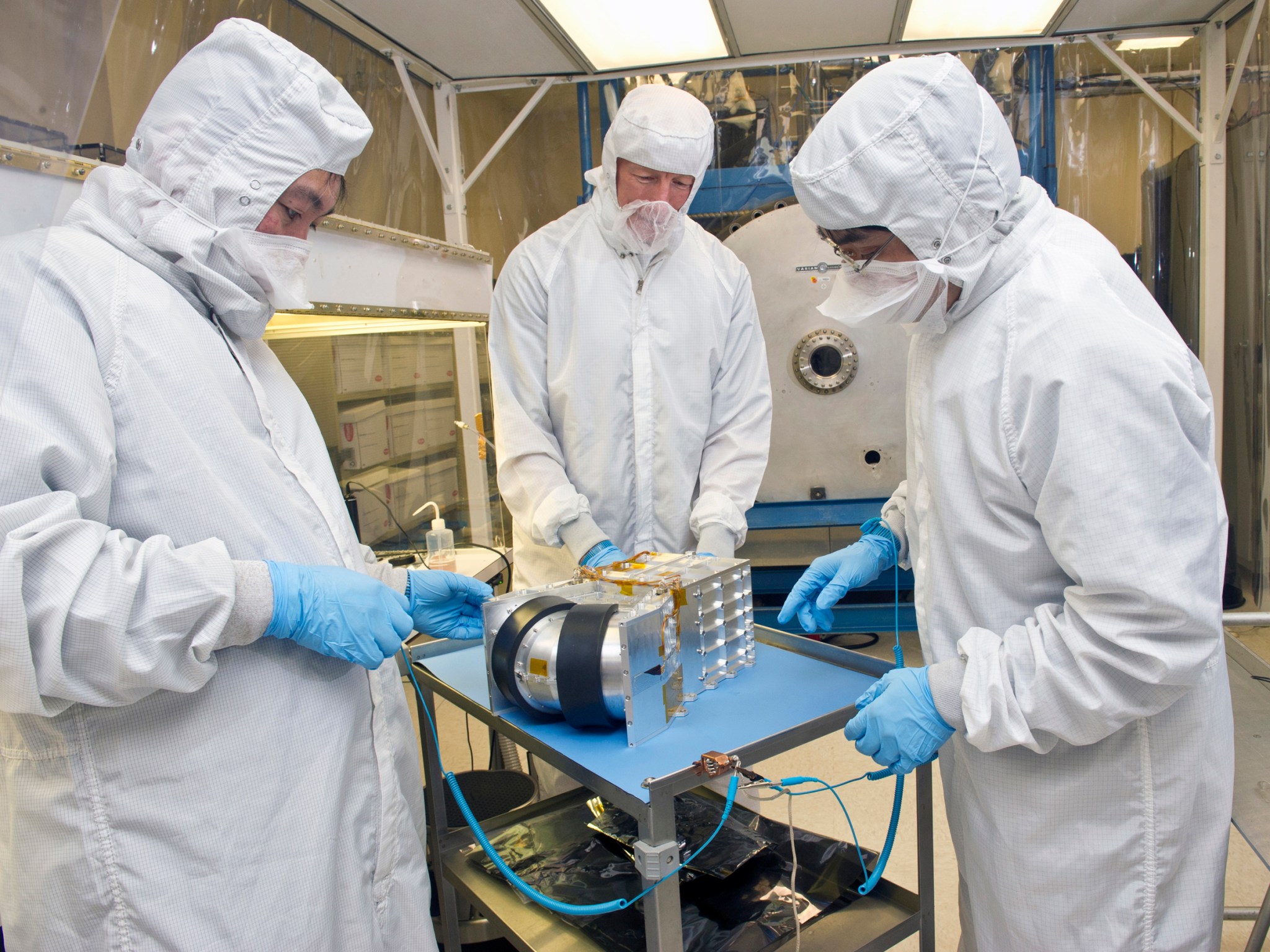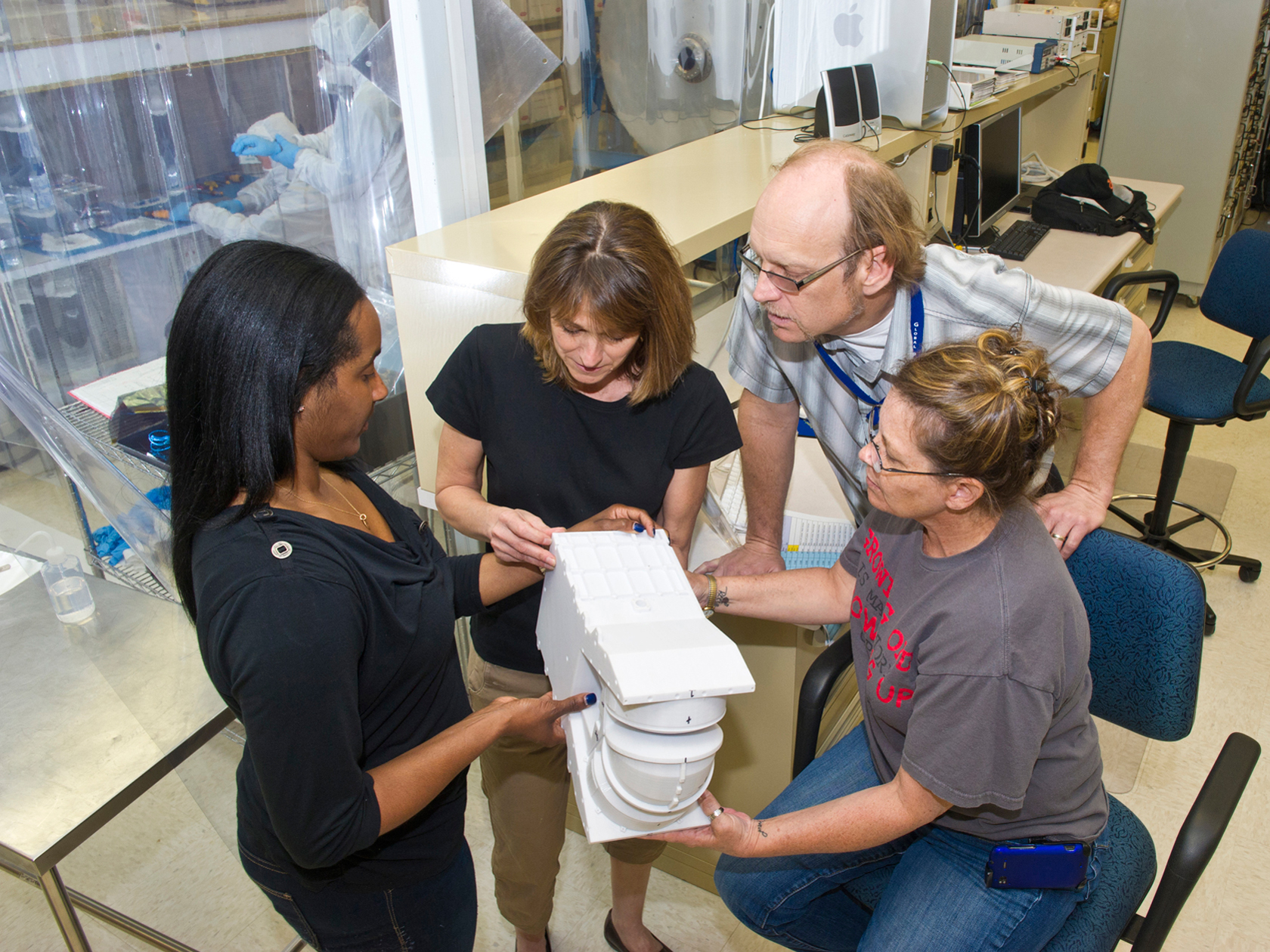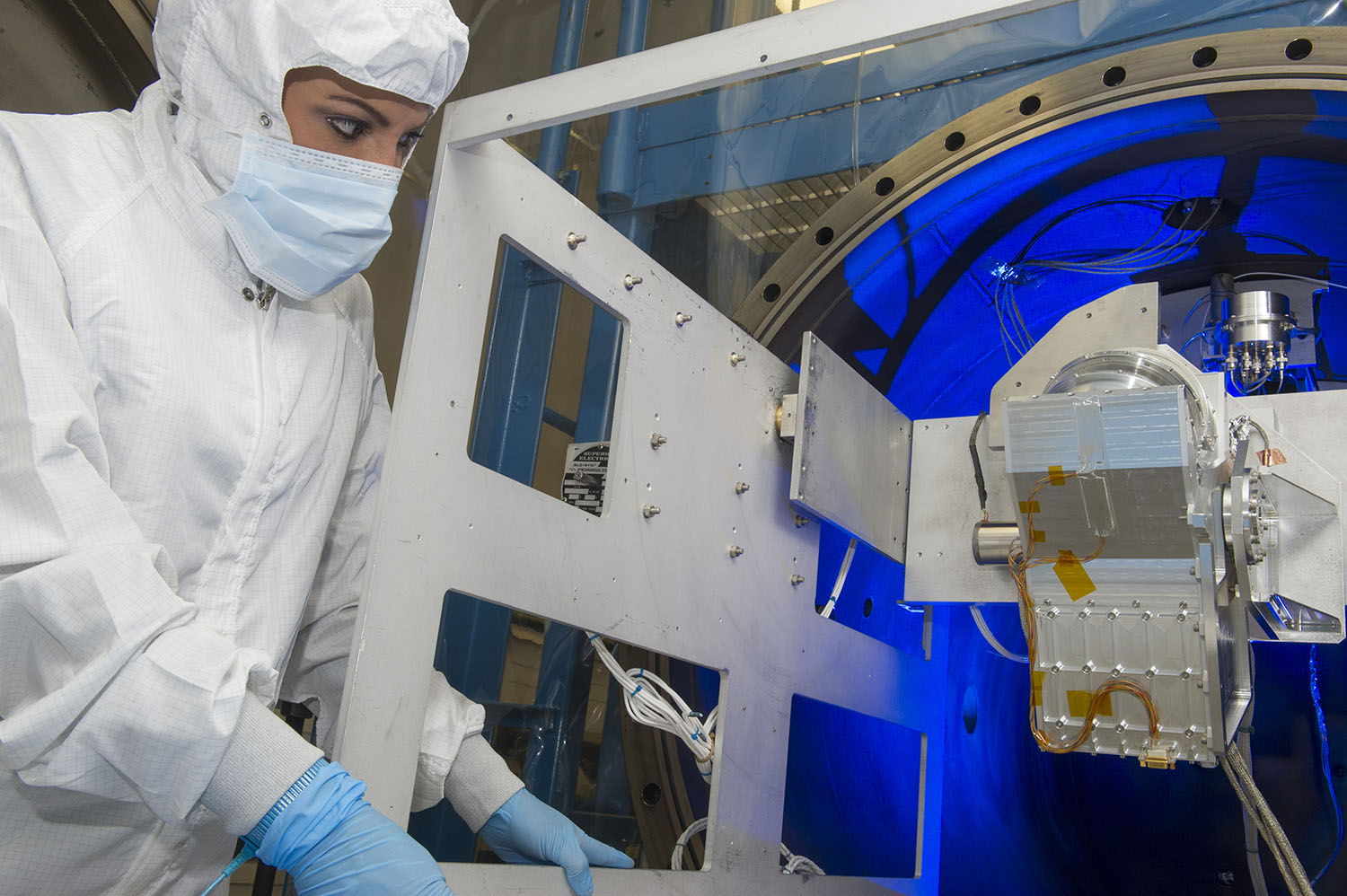As the Magnetospheric Multiscale mission begins operations, scientists and engineers at NASA’s Marshall Space Flight Center are watching closely as the satellites’ 16 Dual Ion Spectrometer, or DIS, flight sensors turn on and start studying the magnetic fields that surround and protect Earth.
“For more than 20 years, Marshall experts and facilities played a significant role with the instruments they built and their discoveries about Earth’s ionosphere and magnetosphere,” said Dr. Victoria Coffey, a physicist with the Marshall Engineering Directorate’s Natural Environments Branch. “Now, our Marshall team and facilities are playing a key role in NASA’s newest Solar Terrestrial Probes mission by ensuring instruments work properly and data can be interpreted correctly.”

On March 12, 2015, the Magnetospheric Multiscale – or MMS — mission launched from NASA’s Kennedy Space Center in Florida, on an Atlas V rocket built in Decatur, Alabama, by United Launch Alliance. The Marshall team tested and calibrated all 16 of DIS flight sensors on the MMS, which uses the Earth’s magnetosphere as a laboratory to study the solar-terrestrial environment. The dancing aurora lights are a visible manifestation of these magnetic processes.
From Earth, space may appear to be calm, black, and quiet, but this mission reveals the invisible processes that make the space near Earth seem anything but tranquil. Four identical satellites will fly in an intricate formation to make the first three-dimensional observations of magnetic fields as they connect and disconnect explosively releasing energy and accelerating particles. MMS has sufficient capabilities to observe and measure these reconnection events as they occur in time and space. While MMS will fly through reconnection regions in less than a second, key sensors on each spacecraft are able to capture measurements 100 times faster than any previous mission.
The mission will help Marshall scientists like Coffey and Mike Chandler, who also are MMS co-investigators, understand the detailed processes that create the aurora and other physical attributes of our planet’s magnetic field: how the field breaks apart and reconnects, how energetic particles are accelerated, and turbulence forces that twist and bend the field. By observing magnetic reconnection in nature, MMS will provide information on processes that govern our space weather, affecting modern technological systems such as communications networks, GPS navigation, electrical power grids, and allowing NASA to keep crews safe on the International Space Station and deep space missions.
Each of the four MMS spacecraft is instrumented identically with particle, electric, and magnetic field instruments. On each spacecraft, four DIS will be paired with four Dual Electron Spectrometers, or DESs, built and tested at the Goddard Space Flight Center in Greenbelt, Maryland, where the mission is managed. Together the ion and electron spectrometers comprise the Fast Plasma Instrument suite. Jim Burch at the Southwest Research Institute in San Antonio is the Principal Investigator for the instrument suite science team.

It took four years to develop the Marshall facility specifically for DIS testing, and it took another four years to test all 16 instruments in a simulated space environment. A team of about 50 Marshall scientists and engineers worked on different phases of the effort from developing the facility, to creating the test and analysis software that mimicked flight software, to testing spectrometers with ion beams of specific energy and direction to determine their response. This process calibrates the instruments so that scientists like Coffey and Chandler, who are part of the Fast Plasma Instrument team, can properly evaluate the data received from space.
“Marshall can be proud of its contributions as NASA learns more about the magnetic field and processes so important to life on Earth, and as we create better space weather forecasts to protect our exploration crews and science and communication satellites,” said Coffey.
The Japan Aerospace Exploration Agency, or JAXA, built the ion spectrometers and shipped them to Marshall’s Low Energy Electron and Ion Facility (LEEIF) at the National Space Science and Technology Center (NSSTC) in Huntsville. The test facility first operated onsite at Marshall and was moved and rebuilt for MMS testing at the NSSTC in 2002. One reason Marshall got the job of calibrating the ion spectrometers was because of the center’s historic role in designing, building and calibrating instruments for many successful NASA sounding rocket and satellite missions, such as Polar, and Dynamics Explorer. These missions helped scientists to observe and understand the Earth’s polar wind, which is a mechanism for atmospheric loss.
Each ion spectrometer was placed in a Marshall laboratory facility that simulated the space environment and exposed it to ion particles. Measurements were then made to determine instrument performance and calibrate them, which will help scientists evaluate data collected in space. Each ion spectrometer was tested over a two to three week period with people working 12-hour days to meet the aggressive schedule required to get the instruments to Goddard on time for integration onto the four MMS satellites.
“A large number of instruments had to be calibrated on a very tight schedule,” said Coffey. “Early on in testing, we found some instrument modifications that needed to be made to ensure the flight data would be interpreted correctly. The DIS test data was processed in real-time and evaluated each day by Marshall and Goddard.”
Coffey and Chandler will assist with MMS operations in Boulder, Colorado, as the instruments move through commissioning before the start of regular science operations and data flow in September 2015.
“We at MSFC along with the rest of the members of the Fast Plasma Instrument team are very excited to begin studying the flight data after the commissioning of the instruments,” said Chandler.
For more information, visit:





























